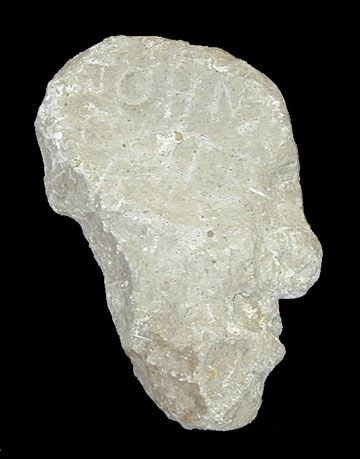
The Colter Stone, discovered near Tetonia, Idaho in 1933, is a piece of rhyolite carved in the shape of a human head. It is engraved on one side with the name “John Colter”, on the other side is the year “1808”. If authentic, it represents the only solid proof of the route followed by trapper and explorer John Colter. Colter explored the greater Yellowstone area during the winter of 1807-8, perhaps the first white man to do so. His route, however, is uncertain as no clear maps or records exist. Colter set out from a fur trapping fort in present-day southern Montana and headed south to near today’s Cody, Wyoming. On his return he passed through what is now Yellowstone National Park. The middle section of his journey is a matter of conjecture. One theory indicates he traveled via Togowtee Pass. The other commonly held view traces Colter’s route through Jackson Hole, over Teton Pass, and north along the west side of the Teton Range. No evidence exists to substantiate either route. The only available sources of information are vague accounts and maps derived from interviews with Colter after his return. Thus, the significance of the Colter Stone becomes clear. The location of its discovery, the west side of the Teton Range, would prove that John Colter had traveled the Teton Pass route. But the Stone has not been fully authenticated, so the Colter Stone remains a fascinating piece of the puzzle yet to fit into the mystery of John Colter’s pioneering sojourn through this region. |
Last updated: February 24, 2015
